Start Shooting Like a Pro: 10 best camera for professional photography beginners
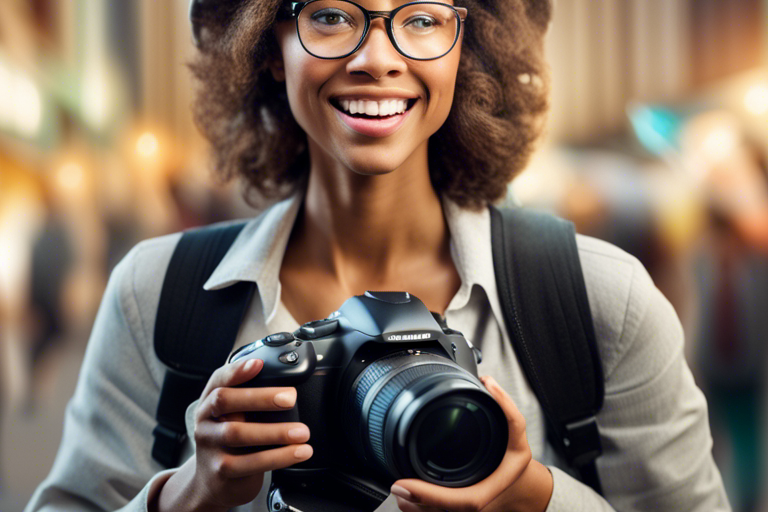
Are you eager to level up your photography abilities and start capturing images like the experts? If you’re just starting in photography, selecting the best camera for professional photography beginners.
Fear not! This blog will explore the 10 best cameras tailored for beginners. Let’s simplify the process and guide you toward capturing
breathtaking photos effortlessly.
Uncover your ideal match: We know how confusing it can feel when buying your first camera. That’s why we handpicked cameras suited for beginner needs and preferences, easing your transition into photography.
🔍 **Discover essential features:** From user-friendly controls to key functionalities, our camera list offers unique options designed
to enhance your photography journey. Get ready to explore varied choices aligned with your skill level and aspirations.
🌟 **Unleash your creativity:** Whether landscapes, portraits, or street scenes ignite your passion, the right camera empowers you to
unleash your artistic vision.
Short Summary:


- Explore our handpicked selection of the top 10 cameras for photography beginners, spanning diverse interests like fashion, sports, landscapes, and video.
- These cameras boast user-friendly interfaces, unique features, and vital functionalities to elevate your photography experience from day one.
- Finding the perfect camera opens doors for your creativity. Whether your passion lies in landscapes, portraits, or street scenes, the right tool is key.
- Resolution, burst speed, weather protection – these factors determine the best beginner professional camera. So choose wisely.
Why Your Camera Choice Matters So Much


### The Factors That Matter Most When Choosing
To make an informed choice, here are the key things to consider:
1. **Type:** DSLR? Mirrorless? Compact? Think about your shooting style and what feels most comfortable.
2. **Resolution:** More megapixels means sharper, more detailed images. Great for that professional look.
3. **Sensor:** Bigger sensors generally perform better in low light. Awesome for dimly lit scenes.
4. **Lenses:** Make sure your camera works with lots of lenses. You’ll want options for different subjects.
Why Choosing Right Pays Off Big
Getting the perfect camera for your needs elevates your photography experience in major ways:
**Image Top Quality:** A camera’s high resolution and broad dynamic range help elevate photos to new heights. Delivering rich details, vivid colors.
**Stellar Performance:** Rapid burst rates, lightning-fast autofocus. Key advantages for capturing swift-moving subjects without blur or motion distortion.
**Flexible Versatility:** The optimal camera expands creative vistas. Experiment freely across diverse photographic genres, styles, techniques.
Selecting The best camera for professional photography beginners
Beginners face a delicate balance. Features, budget constraints, skill growth potential – navigate these factors carefully. Choosing the right camera lays a strong photographic foundation. Approach this pivotal decision thoughtfully. Mastering your camera allows you to unlock your full photographic potential. The right camera shapes image quality and artistic style. Its importance cannot be overstated.
Factors For best camera for professional photography beginners selection


1. **Photographic Niche**: Define your intended genre – portraits, landscapes, sports action, macro closeups. Different specialties demand specific camera capabilities.
2. **Resolution, Sensor Size**: Increased resolution and larger sensors generally yield sharper, more detailed imagery. Evaluate needs for sizable prints, cropping flexibility.
3. **Burst Rate**: This setting lets the camera take a bunch of pictures fast. If you love capturing athletes or wild critters, more frames each second is epic for nabbing the perfect shot.
4. **Lens Compatibility**: Different lenses suit different styles. Maybe you dig nature shots far away, or selfies close-up – either way, lenses matter. More options mean more fun!
5. **Weather Sealing**: Rain or shine, you’ll want a camera that doesn’t quit. Sealed models shrug off dust, dampness, and crazy temps so you can shoot freely.
6. **Low-Light Performance**: For indoor shots or twilight adventures, low-light cameras shine. Their sensors and ISO settings capture crisp images, no fuzzy grain or blur.
7. **Ease of Use**: For newcomers, simple controls make shooting way easier. User-friendly menus streamline adjustments so you can focus on framing perfection.
8. **Video Capabilities**: Serious filmmakers demand topnotch video specs – high res, smooth framerates, fantastic autofocus tracking. Check these features if cinema is your jam.
At day’s end, your ideal camera depends on how you play. Find the model equipped to fulfill your unique photography dreams behind that lens.
💡key Takeaway: Picking the right camera means weighing resolution, burst speed, lenses, weather protection, low-light ability, user-friendliness, and video potential based on your photography passions.
Exploring Varieties for best camera for professional photography beginners
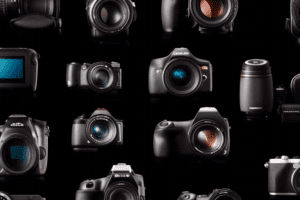

#### 1. DSLR Cameras
DSLRs (Digital Single-Lens Reflex) attract beginners. They offer interchangeable lenses and manual controls. Image quality excels, allowing photography skill development.
#### 2. Mirrorless Cameras
Mirrorless cameras gained popularity recently. They’re compact with advanced tech. Image quality rivals DSLRs, but bodies are lighter with electronic viewfinders. Great portable, powerful picks for beginners.
#### 3. Point-and-Shoot Cameras
Point-and-shoots are beginner-friendly. They’re compact, easy to use, often with automatic modes. Though manual controls are limited, they introduce photography basics.
#### 4. Bridge Cameras
Bridge cameras bridge point-and-shoots and DSLRs. They have more advanced features than point-and-shoots but simpler than DSLRs. With powerful zooms and shooting modes, bridge cameras give beginners versatility to explore styles.
#### 5. Action Cameras
These cameras record fast, thrilling experiences. Compact and sturdy, they resist water damage. Perfect for outdoorsy folk who want to document their active lifestyles.
#### 6. Film Cameras
Film photography offers beginners a nostalgic journey. Shooting on film teaches photography basics like exposure, framing shots, and patience. A unique experience.
#### 7. Instant Cameras
Instant cameras capture moments spontaneously, printing photos right away. For beginners who enjoy tangible photography mementos, these cameras create one-of-a-kind keepsakes.
Investigating different camera types helps you choose based on interests, budget, and goals.
💡key Takeaway: Understanding beginner camera options is key to selecting the right tool aligning with your photography dreams and preferences.
Best Camera For Fashion Photography Beginners
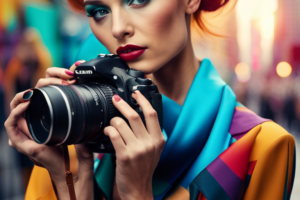

When it comes to fashion photography, having the right camera can make all the difference in capturing stunning shots that stand out. Whether you’re just starting or looking to upgrade your gear, here are some top camera options tailored for fashion photography beginners:
Features a 24.2MP sensor for sharp images
Fast and accurate autofocus for capturing moving subjects
Easy-to-use interface perfect for beginners
2. Nikon D3500:
Lightweight and compact design for portability
Excellent battery life for extended shooting sessions
Full HD video recording capabilities for versatile use
Mirrorless design offers a compact and lightweight camera body
Fast autofocus system for quick and precise subject tracking
Built-in Wi-Fi for easy sharing of images on the go
Retro design with advanced features tailored for creative photography
Excellent color reproduction for vibrant and lifelike images
Intuitive user interface for seamless navigation through settings
These cameras are highly recommended for fashion photography beginners, providing a good balance of features, performance, and usability to kickstart your creative journey in the world of fashion imagery.
💡 key Takeaway: The Canon EOS Rebel T7i, Nikon D3500, Sony Alpha A6000, and Fujifilm X-T30 are among the top camera choices for fashion photography beginners, offering a blend of user-friendly features and impressive performance.
Best camera for sports photography
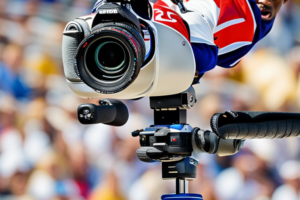
Sports photography requires specialized equipment with fast autofocus, high shutter speeds, and great image quality to capture those decisive moments. Here is a breakdown of the top cameras ideal for capturing those thrilling sports moments:
Top Features to Look for in Sports Photography Cameras:
When selecting a camera for sports photography, consider the following key features:
1. **Fast Autofocus System** Choose a camera with a quick and accurate autofocus system to keep up with fast-moving subjects.
2. **High Frames Per Second (FPS)** Cameras with a high FPS are crucial for capturing rapid sequences in sports.
3. **Excellent Low-Light Performance** Sports events often take place in challenging lighting conditions, so look for cameras with good low-light performance.
4. **Durability and Weather Sealing** Ensure your camera can withstand the rigors of outdoor sports environments with weather sealing and a sturdy build.
5. **Telephoto Lens Compatibility** Pair your camera with a telephoto lens to get close-up shots of action taking place at a distance.
Recommended Cameras for Sports Photography:
1. Nikon D500 (x3) Known for its exceptional 153-point autofocus system and 10 frames per second continuous shooting rate, the Nikon D500 is a top choice for sports photography.
2. Canon EOS 7D Mark II (x2) With a 65-point all cross-type autofocus system and 10 frames per second shooting speed, the Canon EOS 7D Mark II excels in capturing fast-paced sports action.
3. Sony Alpha a9 (x1) Offering a remarkable 20 frames per second shooting speed and excellent low-light performance, the Sony Alpha a9 is a favorite among sports photographers.
#Quotes:
“Capturing sports moments requires a keen eye, fast gear, and a passion for the game.” Sports Photography Expert
💡 key Takeaway: To excel in sports photography, choose a camera with fast autofocus, high FPS, and excellent low-light performance.
Choosing the best camera for landscape photography
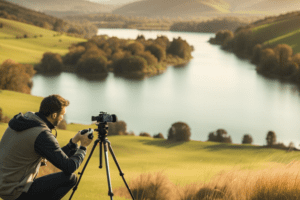

When it comes to capturing the breathtaking beauty of landscapes, choosing the right camera is crucial. A camera that suits landscape photography needs to excel in capturing detail, dynamic range, and color accuracy. Here are some key factors to consider when selecting the ideal camera for landscape photography:
1. Resolution Matters:
High resolution is essential for landscape photography as it allows you to capture fine details in expansive scenes. Look for cameras with at least 24 megapixels or higher to ensure sharp and detailed images. A higher resolution gives you more flexibility when cropping or printing large format images.
2. Dynamic Range and ISO Performance:
A camera with excellent dynamic range helps you capture a wide range of tones in a scene, from shadow details to highlights. Opt for a camera with good ISO performance to maintain image quality in low light conditions often encountered in landscape photography.
3. Weather Sealing:
Considering the unpredictable outdoor conditions in landscape photography, weather-sealed cameras provide protection against dust, moisture, and extreme temperatures. This feature ensures that your camera performs reliably in various environments.
4. Lens Compatibility:
A versatile lens selection is crucial for landscape photography. Invest in high-quality wide-angle lenses to capture expansive scenes with sharpness and minimal distortion. Ensure that the camera you choose has a selection of compatible lenses available for landscape shooting.
5. Focusing System:
Accurate and fast autofocus is essential for capturing landscapes, especially when dealing with moving subjects or changing compositions. Look for cameras with reliable autofocus systems that offer precise focusing for both near and distant subjects in your scenery.
6. Long Exposure Capabilities:
For capturing stunning landscape shots such as smooth flowing water or dreamy clouds, long exposure capabilities are necessary. Check if the camera allows for long exposure shots without excessive noise, ensuring high-quality results in low light situations.
“In landscape photography, the camera is your canvas, and each shot is a masterpiece waiting to be captured.”
💡 key Takeaway: Choosing the right camera for landscape photography involves considering factors like resolution, dynamic range, weather sealing, lens compatibility, focusing system, and long exposure capabilities to ensure your images truly shine amidst the vast and serene landscapes.
Cameras Ideal for Video Recording
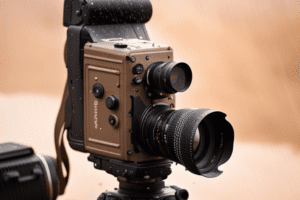

When it comes to photography, transitioning into video recording can be both exciting and daunting for beginners. Many cameras offer impressive features for shooting high-quality videos without compromising on photo capabilities. Here, we delve into the top cameras ideal for video recording, perfect for beginners looking to explore this dynamic aspect of photography:
Known for its user-friendly interface and excellent Dual Pixel autofocus, the Canon EOS M50 Mark II is a solid choice for beginners venturing into video recording.
With 4K video capabilities and a flippable LCD screen, this camera is versatile and convenient for vlogging and capturing dynamic footage.
The Sony Alpha ZV-E10 is tailored for content creators with its emphasis on video recording features.
Boasting a vari-angle touchscreen, fast hybrid autofocus, and external microphone support, this camera offers versatility and superb video quality.
3. Nikon Z50:
Featuring 4K UHD video recording and in-body image stabilization, the Nikon Z50 is a capable camera for aspiring videographers.
Its compact size and user-friendly controls make it a great option for beginners exploring the world of video recording.
With its 4K video recording, rugged build quality, and in-body stabilization, the Panasonic Lumix G85 is a reliable choice for video enthusiasts.
This camera’s weather-sealed body and articulating screen make it suitable for capturing multimedia projects in various conditions.
The Fujifilm X-T30 offers 4K video recording at 30fps, providing exceptional image quality and color reproduction.
Equipped with Film Simulation modes and advanced autofocus capabilities, this camera is a favorite among videographers seeking cinematic results.
A versatile option for both photography and videography, the Canon EOS 90D features uncropped 4K video recording and reliable autofocus performance.
With its intuitive controls and microphone input, this camera caters to beginners aiming to elevate their video production skills.
The GoPro Hero 9 Black is a compact and rugged action camera renowned for its exceptional video stabilization and wide-angle perspective.
Ideal for capturing action-packed videos and adventures, this camera is a popular
Understanding Resolution and Its Impact on Photography
Resolution Demystified: What Beginners Need to Know
When it comes to photography, resolution plays a crucial role in capturing detail and clarity in your images. As a beginner, understanding the basics of resolution can help you make informed decisions when choosing a camera for your photography journey.
Importance of Resolution in Photography:
Resolution refers to the number of pixels in an image, typically measured in megapixels. The higher the resolution, the more detail your camera can capture, allowing for sharper and more detailed photos. Beginners should aim for cameras with a resolution that meets their intended use to achieve the desired image quality.
Considerations When Selecting Resolution:
1. Megapixels Matter: Higher megapixels can result in larger file sizes and more detailed images, but they may not always be necessary for beginners. Consider your photography needs before prioritizing resolution.
2. Balancing Quality and File Size: Opting for too high a resolution may lead to larger file sizes, consuming more storage space. Beginners should find a balance between image quality and practicality.
Expert Insight:
“Resolution is like the canvas on which your photograph is painted. Having a higher resolution provides more room for creativity and post-processing flexibility.” Photography Pro
Ensuring Optimal Resolution Settings:
Understand Your Camera: Familiarize yourself with your camera’s resolution settings to adjust them according to your shooting requirements.
Experiment and Learn: Don’t hesitate to experiment with different resolutions to see how they impact your photographs. Hands-on experience is key to improving your photography skills.
💡 key Takeaway: Understanding resolution is essential for beginners to choose the right camera and capture high-quality images that meet their photography goals.
9. Burst Rates and their Significance in Photography
Understanding the concept of burst rates in photography is essential for beginners looking to improve their skills and capture the perfect shot. Burst rates, also known as continuous shooting speeds, refer to how many frames per second a camera can capture in rapid succession. Let’s explore why burst rates are crucial for photographers and how they impact the quality of your shots.
Importance of Burst Rates:
Capture Action Shots: A higher burst rate allows you to capture fast-moving subjects, such as sports events or wildlife, with precision and detail.
Increase Your Chances of Getting the Perfect Shot: With a faster burst rate, you have more frames to choose from, increasing the likelihood of capturing the ideal moment.
Versatility in Shooting Styles: Different photography genres require varying burst rates. Having flexibility in your camera’s burst speed enables you to adapt to different shooting scenarios.
Factors to Consider:
**Frames Per Second (FPS)**: The number of frames a camera can shoot in one second determines its burst rate. Higher FPS results in smoother, more dynamic shots.
**Buffer Capacity**: The camera’s buffer stores images before writing them to the memory card. A larger buffer allows for longer continuous shooting sessions.
**Autofocus Performance**: A camera with fast and accurate autofocus capabilities complements a high burst rate by ensuring sharp focus in each frame.
Selecting the Right Burst Rate:
**Identify Your Photography Needs**: Consider the type of photography you intend to specialize in to determine the optimal burst rate for your camera.
**Trial and Error**: Experiment with different burst rates and practice shooting in various conditions to understand the impact on your images.
**Future-Proofing**: Invest in a camera with a burst rate that aligns with your current skills and future growth as a photographer.
Quotes
1. “Burst rates are like having a burst of adrenaline for your camera, enabling you to nail those action-packed shots.” Photography Expert
2. “In the world of photography, timing is everything. A high burst rate can make all the difference in capturing that perfect moment.” Pro Photographer
Key takeaway: Burst rates play a vital role in photography as they determine how well you can capture fast-moving subjects and increase your chances of getting the perfect shot. Understanding burst rates and their significance can help you make informed decisions when selecting a camera for your photography needs.
Weather Sealing and Durability in Professional Cameras
When seeking a professional camera as a photography beginner, the consideration of weather sealing and durability is crucial in ensuring your investment remains protected and operational for the long haul.
Understanding Weather Sealing:
Weather sealing is a feature found predominantly in higher-end professional cameras that offers protection against dust, moisture, and other environmental factors. This can be particularly advantageous when shooting in challenging conditions such as rain or dusty environments.
Importance of Weather Sealing for Beginners:
For photography beginners, having a camera with weather sealing can provide peace of mind when shooting outdoors or in unpredictable weather conditions. It ensures that your camera internals are shielded from water and dust, ultimately extending the longevity of your device.
Durability for Long-Term Use:
In addition to weather sealing, the overall durability of a professional camera is essential for longevity. Durability encompasses the robustness of the camera body, the quality of materials used, and the overall build construction.
Best Cameras with Weather Sealing:
1. Nikon D850: Known for its robust build quality and reliable weather sealing.
2. Canon EOS 5D Mark IV: Offers excellent weather-sealing capabilities for outdoor shooting.
3. Sony Alpha a7R III: Combines weather sealing with a lightweight, durable body for portability.
**Quote**:
“As a beginner photographer, investing in a camera with weather sealing and durability can help you focus on capturing stunning images without worrying about the elements damaging your equipment.”
💡 key Takeaway: Consider weather sealing and durability features when choosing a professional camera as a beginner to ensure longevity and protection for your investment.
Conclusion
In conclusion, finding the perfect camera for your photography journey can be a game-changer. With the right tools in hand, you can capture the world around you in stunning detail and clarity. Remember, it’s not just about the price tag but also how the camera suits your individual style and preferences. When choosing a camera, consider factors such as resolution, burst rates, and weather sealing to ensure it aligns with your specific needs. Whether you’re into fashion, sports, landscapes, or videography, there is a camera out there waiting for you to unleash your creativity. Ready to take your photography to the next level? Click below to explore our top 10 camera picks for photography beginners and kickstart your journey towards shooting like a pro
FAQ
What should I look for in terms of video capabilities in a camera?
When looking for a camera with strong video capabilities, consider factors such as resolution, frame rate, and whether it has features like manual controls and image stabilization. Some top cameras for video include the Sony A7S III, Canon EOS R5, and Panasonic GH5.
Which is best camera for Fashion Photography?
The best camera for fashion photography would be one with high resolution, fast burst rates, and weather sealing. Some top options for professional fashion photography include the Canon EOS-1DX Mark II, Nikon D850, and Sony A7R III. It is important to consider your specific needs and budget when choosing a camera for fashion photography.
What is the difference between DSLR and mirrorless cameras?
DSLR (digital single-lens reflex) cameras use a mirror and prism system to reflect light into the viewfinder, while mirrorless cameras use electronic viewfinders or LCD screens to display the image. DSLRs tend to be larger and heavier, while mirrorless cameras are more compact and lighter. Both types have their own advantages and it ultimately depends on personal preference and shooting style.
How important is weather sealing and durability in a camera?
Weather sealing and durability are crucial factors to consider when choosing a camera, especially for professional photographers. A camera with good weather sealing can withstand harsh environments and protect against dust, moisture, and extreme temperatures, ensuring your equipment can withstand the demands of your photography. Additionally, a durable camera will have a longer lifespan and can handle the wear and tear of frequent use.
Is a point-and-shoot camera good for beginners?
A point-and-shoot camera can be a great option for beginners in photography, as it is easy to use and typically has automatic settings that help you take better photos. However, as you progress in your skills, you may want to consider upgrading to a more advanced camera with manual settings and better image quality.
What should I consider when choosing a camera as a beginner?
As a beginner in photography, there are a few key factors to consider when choosing a camera: Your budget: Cameras can range from a few hundred dollars to several thousand dollars, so it’s important to have a budget in mind. Your photography goals: Are you interested in shooting landscapes, fashion, sports, or video? Different types of photography may require different features in a camera. Features: Consider factors such as resolution, burst rates, and weather sealing to find a camera that suits your needs. Ease of use: Look for a camera that is user-friendly and has intuitive controls, especially if you are new to photography. Compatibility: Check for compatibility with different lenses and accessories, as this will give you more options for your photography in the future.

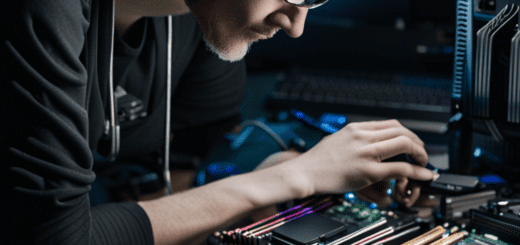
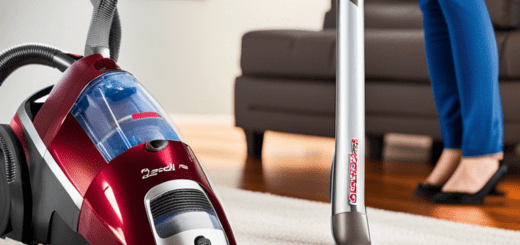

1 Response
[…] More news>> […]